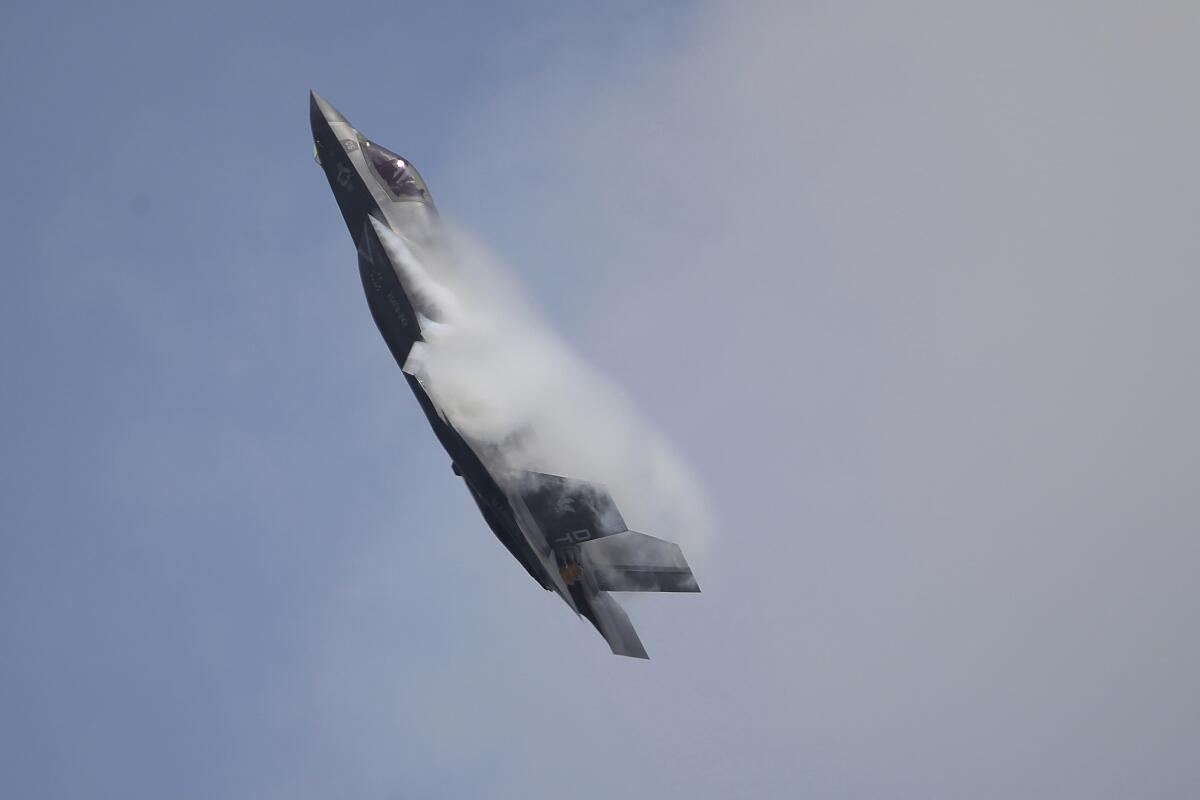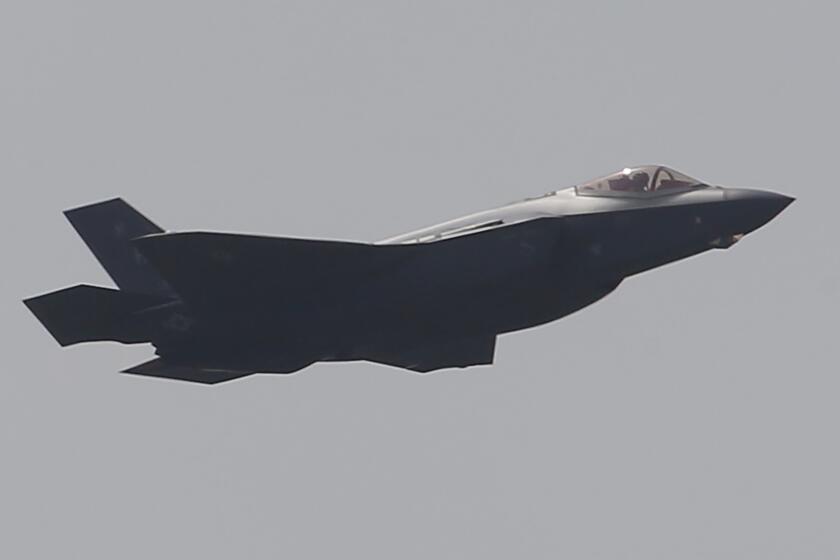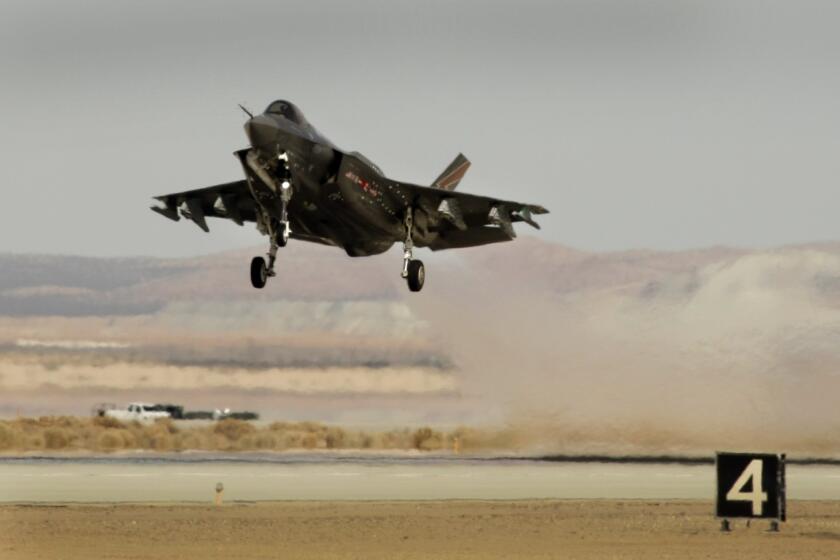Military pilot’s 911 call captures bizarre circumstances of his ejection and jet’s disappearance

- Share via
NORTH CHARLESTON, S.C. — A military pilot whose advanced F-35 stealth fighter jet went temporarily missing last weekend is heard repeatedly requesting an ambulance in a perplexing 911 call from the South Carolina home where he had parachuted to safety, according to audio recording released Thursday to the Associated Press.
The four-minute recording captures the bizarre circumstances for the three unidentified people involved: a North Charleston resident calmly explaining that a pilot just parachuted into his backyard, the pilot who doesn’t know what became of his jet, and a puzzled dispatcher trying to make sense of it all.
“We got a pilot in the house, and I guess he landed in my backyard, and we’re trying to see if we could get an ambulance to the house, please,” the resident said.
The pilot, who said he was 47, reported feeling “OK” after falling what he estimated was 2,000 feet. Only his back hurt, he said. The resident said the pilot looked fine.
“Ma’am, a military jet crashed. I’m the pilot. We need to get rescue rolling,” the pilot said. “I’m not sure where the airplane is. It would have crash-landed somewhere. I ejected.”
Later in the call, he made another plea for medical help.
“Ma’am, I’m a pilot in a military aircraft, and I ejected. So I just rode a parachute down to the ground. Can you please send an ambulance?” the pilot said.
The Marines have described the pilot as an experienced aviator with decades of experience in the cockpit.
A Marine Corps pilot safely ejected from a fighter jet over South Carolina, but the search is on for his aircraft, which might’ve crashed into a lake.
The F-35 crashed Sunday after a malfunction prompted the pilot to eject over Charleston and land in the backyard not far from Charleston International Airport. The fighter jet, which the Marine Corps said was at an altitude of only about 1,000 feet, kept flying for 60 miles until it crashed in a rural area near Indiantown. It took more than a day to locate the wreckage.
A feature on fighter jets intended to protect pilots in emergencies could explain how it managed to continue its travels, the Marine Corps said Thursday.
The Marines said that although it was unclear why the jet kept flying, flight control software would have worked to keep it steady if there were no longer a pilot’s hands on the controls.
“If the jet is stable in level flight, the jet will attempt to stay there. If it was in an established climb or descent, the jet will maintain a 1G state in that climb or descent until commanded to do something else,” the Marine Corps said in a statement. “This is designed to save our pilots if they are incapacitated or lose situational awareness.”
Other questions about the crash remained too, notably why the plane wasn’t tracked as it continued flying over South Carolina and how it could take more than a day to find a massive fighter jet that had flown over populated, although rural, areas.
The Marines said features that erase a jet’s secure communications in case of an ejection — a feature designed to protect both the pilot’s location and the plane’s classified systems — may also have complicated efforts to find it.
The F-35, after a decade of administrative problems, cost overruns and technical glitches, is still not ready for action.
“Normally, aircraft are tracked via radar and transponder codes,” the Marines said. “Upon pilot ejection, the aircraft is designed to erase (or ‘zeroize’) all secure communication.”
The plane would have kept broadcasting an identifier on an open channel to identify itself as friend or foe — but even on an unclassified communications channel air traffic control may not have been able to pick up the signal depending on how powerful its radar was, the weather at the time, how high the plane was flying and the terrain, the Marines said. They said thunderstorms and low cloud ceilings further hampered the search for the plane.
“When coupled with the F-35’s stealth capabilities, tracking the jet had to be done through non-traditional means,” the service said in its statement.
The incident is still under investigation and results from an official review board could take months.
However, the Marines said the feature that kept the plane flying may not only have saved the life of the pilot but of others on the ground.
“The good news is it appeared to work as advertised. The other bit of silver lining in this case is that through the F-35 flying away it avoided crashing into a densely populated area surrounding the airport, and fortunately crashed into an empty field and forested area,” the statement said.
More to Read
Sign up for Essential California
The most important California stories and recommendations in your inbox every morning.
You may occasionally receive promotional content from the Los Angeles Times.















